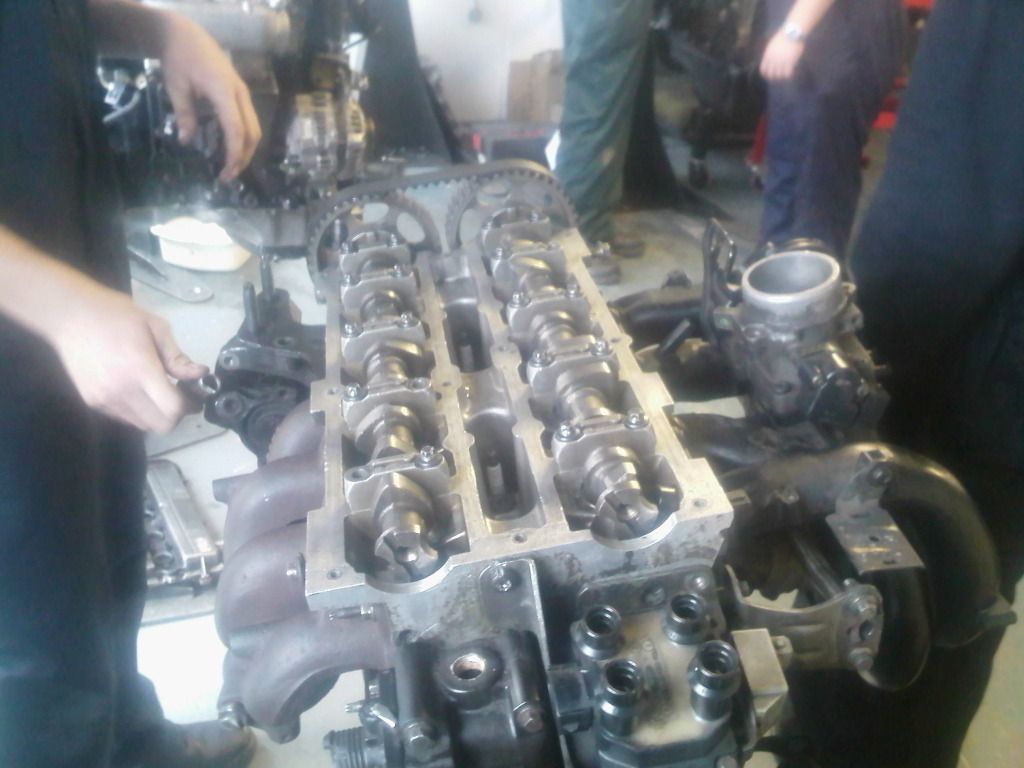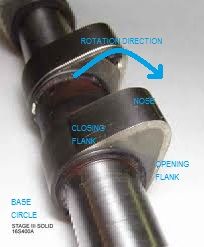That's really useful, Mark! Really bloody useful in fact! We hardly touched the surface last week but I know we're going to get in depth with valve timing. it certainly makes sense, especially why the inlet is allowed to open before TDC on the exhauset stroke as you say having the overlap will create a vacuum which, when you're wanting to get your mixture in in however many miliseconds it is then i suppose every little aid helps the overall process massively





so thanks for that!
well, hopefully youll be pleased to know i finished my first assessment and although its still being marked the tutor commented that my work was very impressive!




in short over the last few weeks, as you've seen from the photos, we've had a load of different engine jobs that we've practised and for the assessment we simply had to choose one. me and my buddy chose removing head, whipping valves out, lapping them in, putting the valves back in and refiting the head and timing it up correctly.
i shan't go through it all as although it was a different engine i've already highlighted the job with pics previously. HOWEVER, i did get this pic which i think may interest you.....

this engine is a 1991 Ford Escort 1.8 DOHC.
Firstly i'll highlight that me and my buddy did make one mistake and that was we assumed something

there was a notch on the crank and every other engine we've worked on has been at TDC when the notch is at 6 o'clock. Sadly for us it should've been at 5 o'clock





but only ourselves to blame as we should've double checked..... luckily it was the only mistake we made

the very interesting thing about this engine (or interesting to me at least) is it's the first engine that's required the use of a camshaft alignment tool (all other engines in the workshop have simply used timing marks...very crude). the photo shows the back of the engine and if you look at the back of the cam shafts youll note two indents that when they're at the correct time you can slot the alignment tool nicely in and it fits perfectly. with the crank at 5 o'clock this bad boy is timed up

OK next up the cam lobe...

pretty straightforward. the longer the nose the longer the valves stay open for.... i suppose thats why they say the bump stick is the heart of the engine as its performance will change the performance of the car.
next, firing orders....
we learned very little about this but what i do know is that the reason the foring order appears ''random'' (instead of just 1234) is to balance out the power strokes across the engine.
Four pot enginges have one of only two possible firing orders:
1342 or 1243
i still dont get why you couldnt have 1324  in my mind thats the most even order
in my mind thats the most even orderIn line 6 cylinder engines can only have the fllowing:
145632, 142635, 132645 or 135642.
as mentioned before sadly we didnt delve in to this so thats the only info i have..... feel free to add as appropriate

lastly pistons and the combustion chamber.....
i've mentioned the crown (very top), the rings (two compression rings and one oil ring with gaps at 180o to avoid leakage, the skirt, the gudgeon pin. but i would also like to add that the combustion chamber shapes are designed to help to burn the mixture and also create a swirly vacuum for the mixture and exhaust gases. moving air is hard so agan every little helps!

Anyway thats it until tomorrow. hope youve enjoyed so far


 Author
Topic: Mechanic School Blog (Read 96030 times)
Author
Topic: Mechanic School Blog (Read 96030 times)

